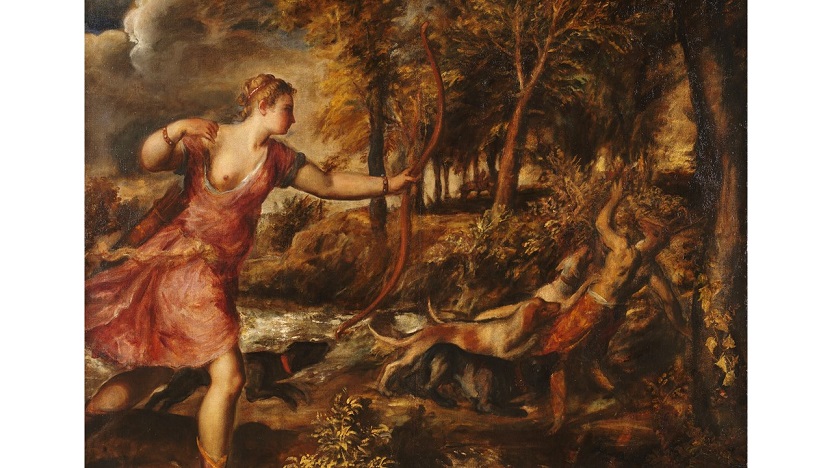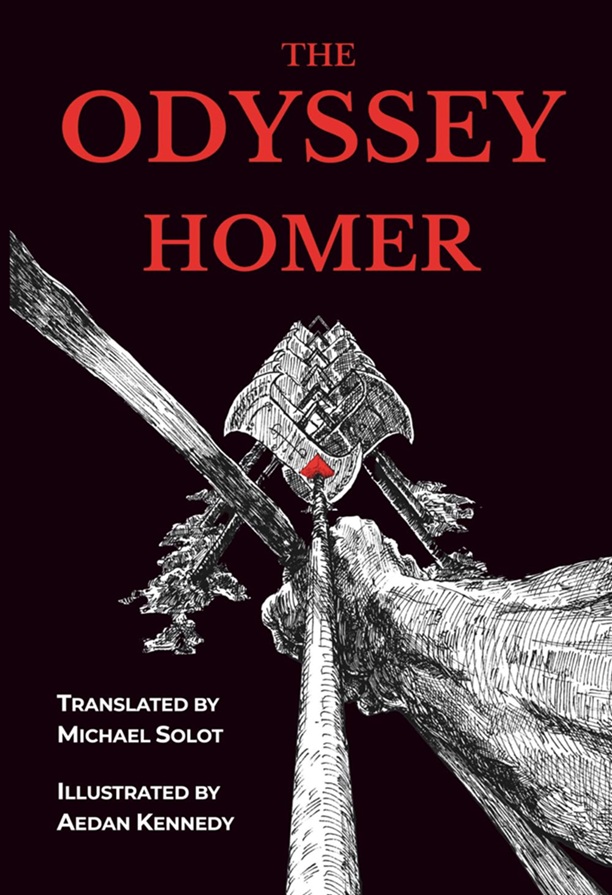.
Actaeon Transformed
after Titian and Ovid
Like his hounds, the hunter Actaeon
in Titian’s painting, drawn by some sharp scent,
saw the goddess lounge with nothing on
her body, on whose limbs the light was bent—
unearthly light within. The loosened style
the artist used reveals the hunter wanted
more than what he knew. Her rigid smile
and killing stare had left him stiff and haunted.
His dogs go through her legs and race unmuzzled
to him, his head become an antlered stag’s,
as if a mask for rituals. The puzzled
hounds in heat will tear his flesh to rags.
And when the goddess and her virgins go,
they leave behind a nightmare Cupid’s bow.
*
Titian’s smear of paint defines no blame,
no victim’s fault, no imaging of text.
He knew his painting was a poem already.
The bareback use of some one’s art we name
a theft. But Ovid twisted myth and flexed
his wit—his bow and arrow sure and steady.
.
.
Royal Rhodes is a retired professor of global religions at Kenyon College, and a life-long student of the Classics. He studied under the late Robert Fisher Healey S.J., Oxford and Harvard educated authority on ancient literature and the co-author of the important edition of the Sacred Calendar of Eleusis. Healey was the treasured Magus who led Rhodes into the mysteries of Greek and Roman religion and literature.















I am beguiled by this poem that brims with beauty and mythology observed through “Titian’s smear of paint” that “defines no blame”. I love the hypnotic passion of the piece… a poem that paints in words that weave a magic spell of wonder.
The painting as a poem is lovely…Allegra